- Christian Chase
- Communications Coordinator
- Coder-in-Residence
- Connected Lane County, Lane Education Service District
- Patrick Kennedy
- Director of Data Management and Analysis Group Research Associate
- Coder-in-Residence
- University of Oregon
- Heidi Larwick
- Director
- Coder-in-Residence
- Connected Lane County, Lane Education Service District
- Mari Strand Cary
- https://education.uoregon.edu/people/faculty/mscary
- Senior Research Associate
- Coder-in-Residence
- University of Oregon
Public Discussion
Continue the discussion of this presentation on the Multiplex. Go to Multiplex




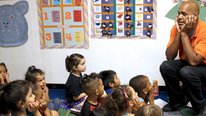
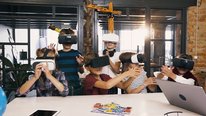
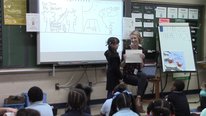
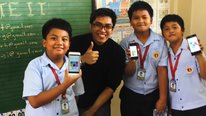
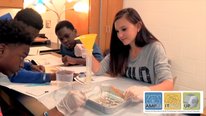
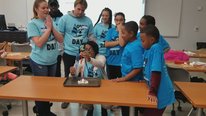
Jacqueline Genovesi
Vice President
Thank you for sharing your video. I'm wondering how you measured student engagement and identity with the coding project? Also why did you pick academic performance as measurement?
Heidi Larwick
Director
We would be happy to share the pre/post survey questions with you if you'd like to share your email.
Mari Strand Cary
Senior Research Associate
Qualitatively? We asked teachers and coders to think of one student who "stood out" to them. We got back AMAZING and touching responses regarding the shy students, students with major or multiple disabilities, students who had major behavior issues that largely disappeared while working on these lessons, and those that established a positive classroom identity (either socially or as a source of help and expertise) with their peers (or even teacher) for the first time.
Quantitatively and qualitatively?
The lessons come with exit tickets completed by students that give educators and coders a chance to see if kids are particularly excited by (or confused) by that day's content. In future implementations, it will be helpful to encourage adults to review those exit tickets as they can be quite helpful to jumping into the next lesson! We are analyzing those now to report as outcomes of the randomized control study we conducted.
As Heidi alluded, we also administered student (and adult!) surveys targeting knowledge, interest, and self-efficacy regarding problem solving, collaboration, coding, robotics and computer science and student pre & post tests to reflect changes in knowledge and persistence. Analyses are underway, but we are excited to see that we are definitely opening many kids' eyes to content and careers they hadn't considered or were scared of. We're also inspired that MANY students want to do more coding (Gigabots and other types) and that the students who participated showed small, but statistically significant improvements in knowledge and self-efficacy after just six lessons.
This was a district partnership grant where external measures collected by the district were important and required. We hope that somehow we've effected positive change in those very distal measures. In the meantime, we are happy to move the needle on the more proximal measures.
Michael I. Swart
Mari Strand Cary
Senior Research Associate
Welcome to the Showcase and the discussion about Lane County, Oregon’s coder-in-residence program. We’ve been super excited to scale up a small pilot project to address existing STEM inequities to….
We’re currently working on scaling the coder-in-residence experience even further. But the current model has limitations. For example, an obvious draw and advantage of this model is the visiting “coder” (community member/industry partner) who brings experience and perspective to the classroom. Our team sought to include a diverse array of coders and paid off. Survey responses suggest kids really seem to notice and benefit from interacting with someone who doesn’t “look like” a coder or who came to coding in an unexpected way. But, it’s difficult to find coders who can commit to visiting classrooms at the same time every week and driving to rural schools.
We’d be interested in knowing your thoughts on the following questions we are working through as a team:
Can’t wait to talk!
Kristin Flaming
Christian Chase
Jacqueline Genovesi
Vice President
As we are all adjusting to the affects of the pandemic, have you thought about using virtual visits to solve you challenge of having coders visit the classroom once a week? If so, can you share your plan for implementation, I'm sure many of us are grappling with the same issues.
Heidi Larwick
Director
Thanks for the question! We are definitely grappling with this question. While students are at home and many without connectivity (living in rural areas), the program has been halted temporarily. While we are teaching coding, we're also teaching collaboration which is tricky to do while not together in person or virtually. This summer, we will be exploring ways to bring the content virtually to the classrooms with coders creating instruction videos, giving instruction live remotely, and rethinking unplugged activities that can be done at home without devices/robots/etc.
Jacqueline Genovesi
Abigail Levy
Distinguished Scholar
Your question about whether the program would have the same “oomph” and effect on student interest and learning (and teacher commitment, buy-in, and excitement) without the coder is a good one. It made me wonder about the connections between the measures of impact that your partners at the Univ of Oregon are measuring (student engagement with STEM programs, STEM self identity, academic performance, and the effectiveness of industry-educator relationships) and the teacher impacts (commitment, buy-in, and excitement). How do you see the two groups of impacts related to one another? And are the coders in residence associated more strongly with one group of outcomes than another, and if so, why do you think that's the case?
Thank you for sharing this work.
Mari Strand Cary
Senior Research Associate
We are working our way through so much data, it will be fascinating to delve into questions like these. Thanks for raising now and maybe setting us off on that path! (In other words, we don't know yet!)
An important thing to note is that we asked teachers many questions about their enthusiasm, expectations, and confidence in regards to the program and found positive change from pre to post. Their responses revealed the program has promise for sustainability and expansion/adaptation. Both coders and teachers were enthusiastic about recommending the CIR program to colleagues in and out of their organization/district and felt comfortable with repeating the experience; most teachers even said they were comfortable teaching a couple lessons on their own (though it was clear from their surveys that they greatly appreciated, felt reassured by and leaned heavily on the visiting coders).
Teachers’ ratings of how the lessons affected student perceptions and the students themselves increased dramatically from pre to post. I think teachers who are in the room as students engage for the first time, or get to be the expert for once, or express newfound confidence can't help but be more committed to and excited about the program. (Indeed, many asked to do it again and, unprompted, indicated they'd try to incorporate more coding and collaborative project-based learning into their classes).
Abigail Levy
Distinguished Scholar
It would be so interesting if you could follow some of your teachers for a couple of years to see whether and how they incorporated some of what they gained from their experiences into their instruction. Perhaps a purposefully varied subset of teachers based on characteristics that seem predictive of particular outcomes. It sounds like you're already awash in data so more isn't always better, but good questions always raise more questions!
Mari Strand Cary
Senior Research Associate
I think this is a great idea! We'll try to incorporate it into our plans! Thanks.
Abigail Levy
Distinguished Scholar
I'd love to hear what you find out, Mari.
Alison Billman
Director of Early Elementary Curriculum
Thank you so much for sharing your work. I raises a flurry of questions for me. I am curious about how you recruited the Coders-in-Residence. I also wonder about the scope of their role in and out of the classroom. Did they help develop the lesson sequence? Do they lead the lessons or does the teacher lead the lessons?
Mari Strand Cary
Senior Research Associate
Thanks, Alison --
Coders were recruited through personal networks, posts to websites, and word-of-mouth. Some were repeat coders from the pilot project. For scheduling reasons / distance reasons, some coders worked with multiple classes. (Again, a large argument for incorporating virtual coding visits!) Lane Educational Service District has a number of really powerful community outreach and "inreach" initiatives that are trying to connect schools and industry, fill the STEM pipeline, provide really strong career/technical experiences, etc. This program was a way to bring new companies, organizations, and self-employed folks to the table.
One of the coders helped develop and revise the lessons and train teachers and coders. The program is designed to be co-taught, but coder/teacher pairs took every type of approach imaginable due to confidence, personalities, time, etc. Though we haven't yet analyzed that data, we did ask pairs to document who taught each lesson to help us better quantify who was teaching, modeling, assisting students, etc. In the ideal world, we'd have much more time for interaction, training and practice before the pairs work with students (remember, these coders are not classroom teachers just as much as most teachers are not computer science experts!).
Dave Miller
Great project. Thanks for sharing it here on the SFA. I'm curious about the partnerships you've generated with local STEM experts. What have you baked into your project programming so that these sorts of outreach elements are accessible to teachers and school administrators and also how you're thinking about building sustainability into the fostering of these industry-school-researcher partnerships. Thanks!
Heidi Larwick
Director
Thanks for your thoughts and questions. We have a robust network of industry partners and education specialists that collaborate on programming for all of our initiatives. This particular set of lessons and activities will be housed at our ESD (Education Service District) so that teachers can check out the equipment, have free access to the lessons, and we are committed to helping connect industry to the classroom. This program has shifted the way we work with our local research university (University of Oregon) in that we now have a learning education and research group that convenes quarterly to learn about what is happening in K12 schools and how research might be used to demonstrate impact. Thank you!
Kristin Flaming
This is such an intriguing program. I have never coded robots of any sort. What you demonstrate the children doing with their gigabots makes me want to try it out. Great job!
Christian Chase
Communications Coordinator
Thank you! It's definitely a great place to start. The software that the LEGO robots use is mostly drag-and-drop commands, so kids can get a sense of how code is executed at a basic level.
Michael I. Swart
Cool work and thanks for sharing. Can you expound a bit about the curricula for this program? Its focus? Goals? Specific Skills? Are the technology professionals given a framework for their classroom facilitation? PD? Are teachers provided with PD? a formalized curriculum? Evaluations to administer? Pre-Post metrics?